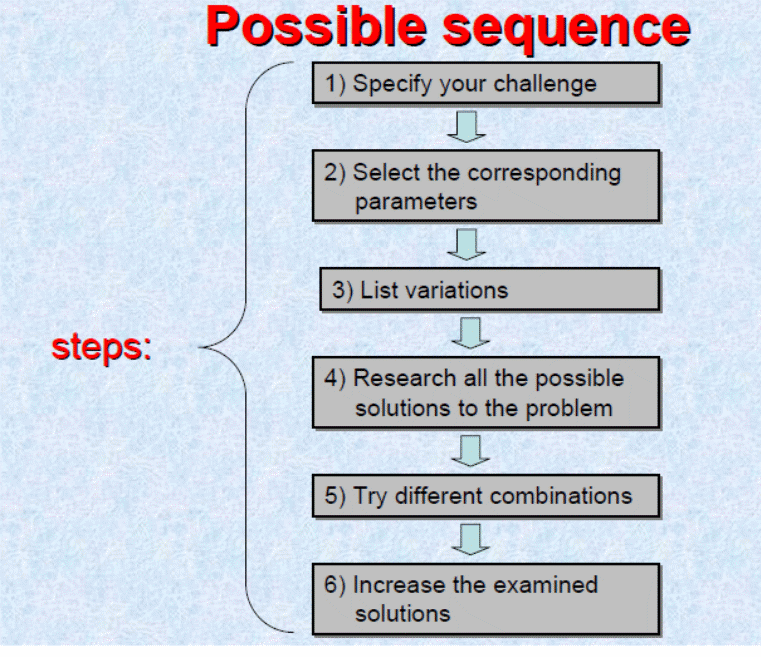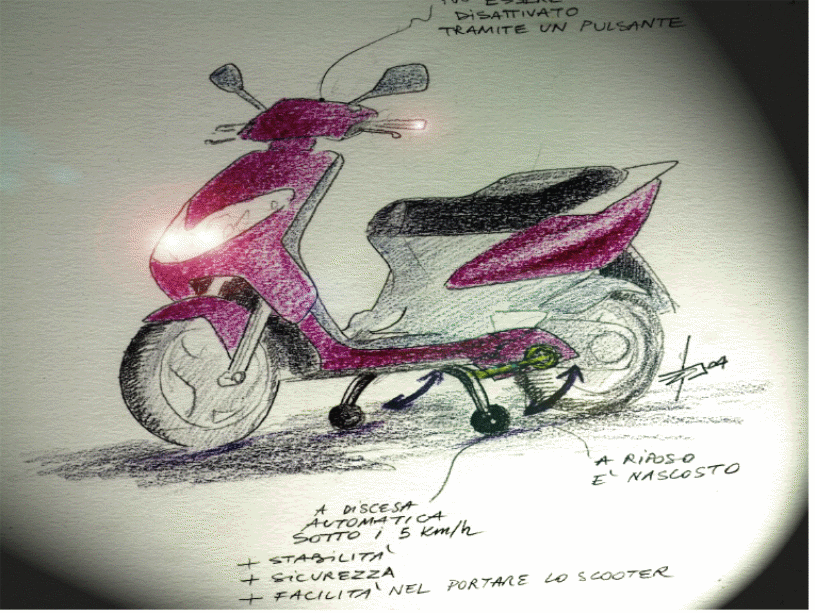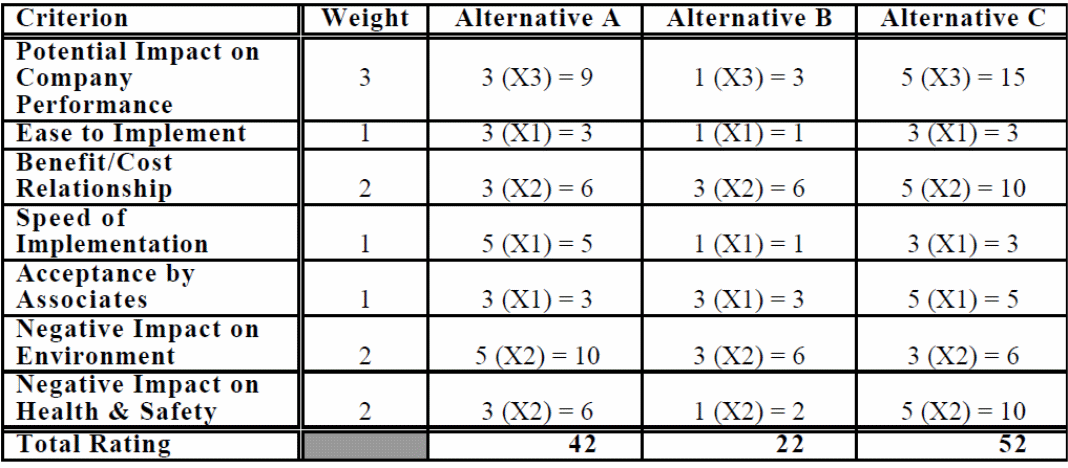Introduction
Studies show that each phase in the product design process can be made efficient depending on the effectiveness of the tools used in the decision making process. Among the decision making tools that are used include brainstorming, generating alternatives-morphological analysis, and the evaluation matrix.
The tools have different areas of application and effectiveness decision making. The tools are crucial in optimizing available solutions to design a good quality product when seeking for possible solutions.
This study aims to establish the strengths and weaknesses of each of the tools that are applied in decision making at the product design phases and the areas they have been applied to provide solutions to design problems.
Brainstorming
According to Bronson and Merryman (2010), the effectiveness of brainstorming depends on ideas generated by individuals working in groups to create a design that balances the goals of the user at the problem definition and possible solution to determine the best possible solution phases in the design process.
Hunton and Gold (2010), brainstorming involves different product design ideas that are put together in group thinking sessions to evaluate the alternatives and generate high quality product design solutions.
However, the limitations of brainstorming, according to Carpenter (2007) are that it is time consuming, hinders other group members from making positive contributions that might hinder the use of better quality product design ideas.
Weaknesses in the brainstorming process can be detected by determining if other group members do not understand the design problems and suggested solutions, do not make contributions, relate with others poorly, and tend to be segregated among their social status (Kinicki & Williams 2010).
In practice, General Electric CEO Jack Welch used brainstorming sessions in decision making with employees, but brainstorming did not prove to be an effective tool for decision making because of its weaknesses and the results were not as effective (Hunton & Gold 2010).
IDEO is one of the practical a product development companies that use brainstorming to increase the productivity of employees and the quality of products (Kinicki, A & Williams 2010).
Generating alternatives-morphological analysis
Generating alternatives-morphological analysis is a decision making process for generating ideas within the design process, which depends on the structure of already existing words (Bayazit 2003).
The arrangement of words or allomorphs is used to determine the arrangement of rules for generating alternative outcomes in the morphological analysis process and the strength of the decision making process relies on the sequence and arrangement of the related elements (Hornecker 2010).
To address the challenges in decision making, the designer has to “break down a system into constituent components, concepts, and sub concepts and each component represents a dimension in the decision making process that affects the final decision” (Dangayach & Deshmukh 2001).
Carpenter (2007) argues that the alternatives-morphological analysis is a highly structured decision making process used to discover new configurations and relationships that cannot be discovered when using less structured decision making processes.
According to Bronson and Merryman (2010), the boundary conditions in a highly structured system can be determined by using the context factors that allow the designer to evaluate different parameters that are used to solve complex product design issues (Zimmermann 2001).
A morphological box is used to develop a solution matrix to provide answers to certain challenges.

Figure 1, Lee 2009
The decision making process is useful to find solutions for motor vehicle industry and jet propulsion problems that require several parameters because of the complexity of the problems (Lee 2009).
For instance, an aircraft is made of very many functioning components such as fuel consumption, power production, and wings balancing that require accurate decisions to make the parts function optimally (Zeiler 2011).
However, the weaknesses with the alternatives-morphological analysis are its structured nature that limits innovation and creative thinking.

Figure 2, Zeiler 2011
Evaluation matrix
It has been established that the “evaluation matrix is another method used for decision making. The method is based on the premise that missing values in a matrix can provide imperfect alternatives and depends on the cause and effect, descriptive, and normative questions” (Baines, Lightfoot, Benedettini & Kay 2009, p.45).
The strength of an evaluation matrix is that it enables effective triangulation, sustainability, efficiency, and effectiveness in the design process. The method enables teams to be easily evaluated to address any challenges that arise during the design process using sub questions that are generated in the process (Trott 2008).
The strength of the evaluation matrix is based on the construct of a list of key factors, percentage ratios, weight marks, score specific decision making elements, aggressiveness, competitiveness, and defensiveness (Carpenter 2007).
Different studies have shown that different areas can benefit from quality planning by use of the evaluation matrix to determine the best solution to the problems being solved as shown in table 1.

Table 1 – Table of evaluation matrix
In table 1, each alternative solution to a problem is assigned values, which are used to identify alternative solutions using the mandatory and desirable criteria of fail/pass options. The weight of each problem is in the evaluation matrix and a solution that corresponds with the problems is determined (Sharma & Berry 2007).
Performance specifications of the products including the product attributes that are measured depend on the values and weights assigned to each object.
The main strengths with the method are that it uses a scoring system to assign weights and to rate alternative solutions for the problems that are identified with a product so that the best solution is obtained among different alternatives.
Several practical examples exist that demonstrate the successful application of the method to solve project related problems.
Among the examples that the technique has been applied is in the building industry where different materials and products costs are evaluated to determine the best options and cost effective methods to procure raw materials and products used in the building industry (Stevenson, Drake, Shea, Zelazny & Murray 2010).
However, it takes a significant amount of time to find solutions to problems and that depends on how complicated a situation could be. The advantage with the method is the ability to use the synergy from teamwork to solve complex problems.
Conclusion
The product design process is important when determining how to optimise the right decisions to make good quality products. Among the tools include brainstorming, generating alternatives-morphological analysis, and evaluation matrix tools.
The strengths and weaknesses of the tools provide the best ground to determine the right tool to use in decision making during the product design phase and how the decisions made affect the quality of a product in the design phase.
References
Baines, TS, Lightfoot, HW, Benedettini, O & Kay, J M 2009, ‘The servitization of manufacturing: a review of literature and reflection on future challenges’, Journal of Manufacturing Technology Management, vo. 20, no. 5, pp. 547-567.
Bayazit, O 2003, Total quality management (TQM) practices in Turkish manufacturing organizations. The TQM magazine, vol. 15, no. 5, pp. 345-350.
Carpenter, TD 2007, ‘Audit team brainstorming, fraud risk identification, and fraud risk assessment: Implications of SAS’, The Accounting Review, vol. 82, no. 5, pp. 1119-
Dangayach, GS & Deshmukh, SG 2001, ‘Manufacturing strategy: literature review and some issues’, International Journal of Operations & Production Management, vol. 7, no. 21, pp. 884-932.
Hornecker, E 2010, ‘Creative idea exploration within the structure of a guiding framework: the card brainstorming game’, Proceedings of the fourth international conference on Tangible, embedded, and embodied interaction, vol. 2, no.4, pp. 101-108.
Hunton, JE & Gold, A 2010, ‘A Field Experiment Comparing the Outcomes of Three Fraud Brainstorming Procedures: Nominal Group, Round Robin, and Open Discussion (Retracted)’, The Accounting Review, vol. 3, no. 85, 911-935.
Kinicki, A & Williams, B 2010, Management: A Practical Introduction, McGraw-Hill, Kent Town.
Lee, N 2009, Project methods as the vehicle for learning in undergraduate design education: a typology. Design Studies, vol. 5, no.30, pp. 541-560.
Sharma, RRK. & Berry, V 2007, ‘Developing new formulations and relaxations of single stage capacitated warehouse location problem (SSCWLP): Empirical investigation for assessing relative strengths and computational effort’, European Journal of Operational Research, vol. 177, no. 2, pp. 803-812.
Stevenson, LG, Drake, SK., Shea, YR., Zelazny, A M & Murray, PR 2010, ‘Evaluation of matrix-assisted laser desorption ionization-time of flight mass spectrometry for identification of clinically important yeast species’, Journal of clinical microbiology, vol. 48, no. 10 ,pp. 3482-3486.
Trott, P 2008, Innovation Management and New Product Development, Prentice Hall, London.
Zeiler, W 2011, ‘Building bridges for engineering education: the experience of partnership with building industry for sustainable solutions’, ASME 2011 International Design Engineering Technical Conferences and Computers and Information in Engineering Conference, vol. 2, no. 34, pp. pp. 823-832.
Zimmermann, HJ 2001, Fuzzy set theory and its applications, Kluwer Academic Publishers, Boston.